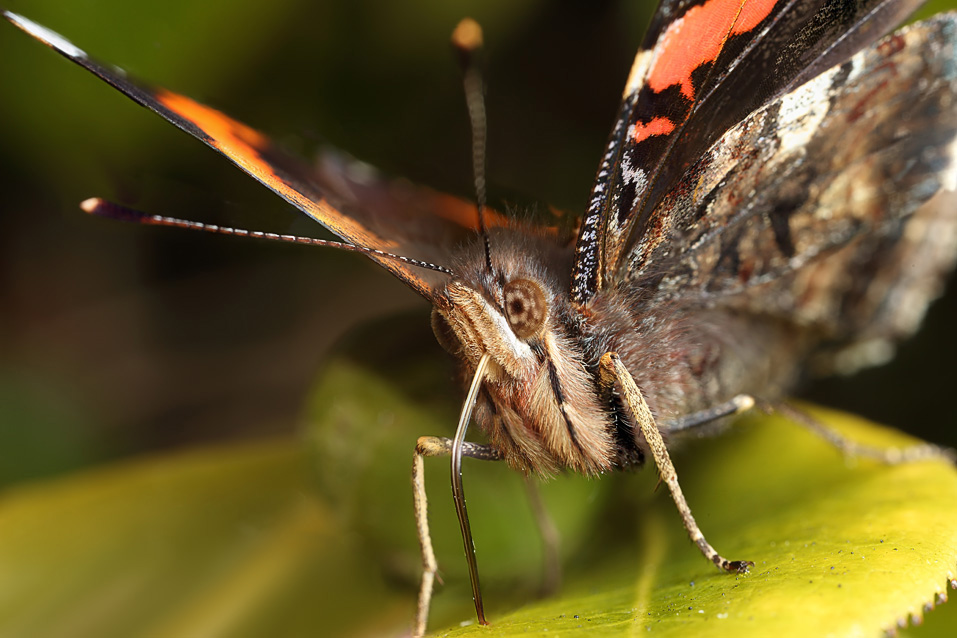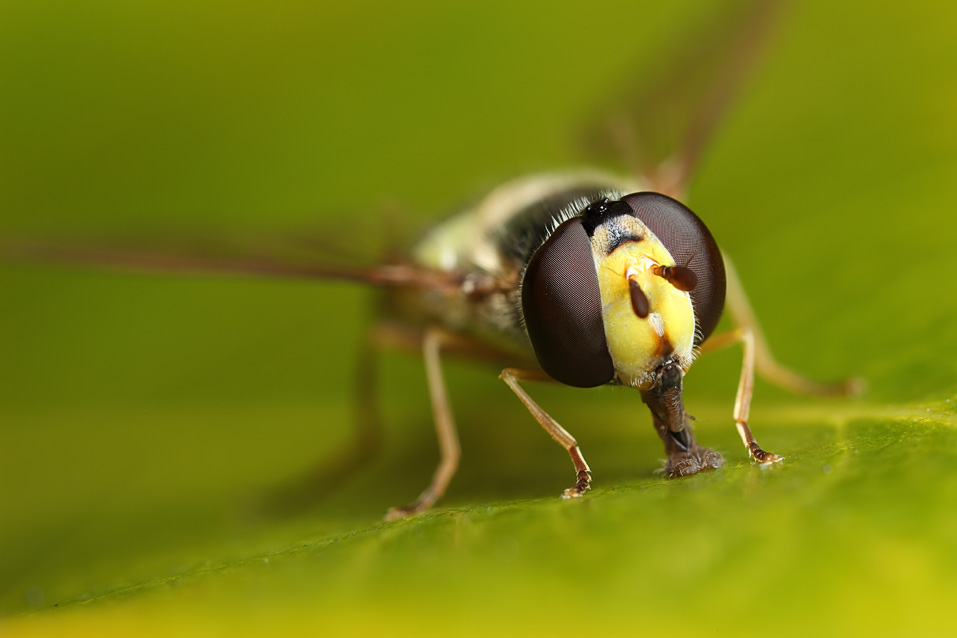To do this I try to take a fairly fast sequence of shots checking the focus point for each shot- I can normally manage about 1 shot a second when doing this.
Often the biggest problem with this is very sharp unnatural looking DOF boundaries. I have toyed with the idea of taking a couple of small aperture shots and then stacking wide aperture shots on the top but in practice i find it very difficult to change apertures during a handheld shot sequence. I often resort to what I call differential hand stacking where I am purposely not stacking the whole picture but just the parts I'm interested in. This can get round sharp DOF boundaries on the background/foreground but obviously you have to be very careful.
At it's simplest- I might just be doing 2 shots- one with the head and part of the thorax in good focus and one with the eye in good focus but obviously this depends on the magnification being used.
The slightly tricky part is stacking them . If I have had a solid surface to rest on and the bug has not moved then the normal stacking progs such as zerene work pretty well, however if there is either some FOV movement or bug movement the I tend to resort to hand stacking the shots in Photoshop using mainly the repair brush to transfer in focus parts from one picture to another. Sometimes you have to rotate the donor picture and rarely you have to re-size it before doing this.
Couple of examples below where the first photo is a single shot and the second shot a hand stacked version made from several shots. In both these shots I was holding the leaf the bug was on and resting the camera lens on that hand (you can see some oof finger in #1)
Brian V.




